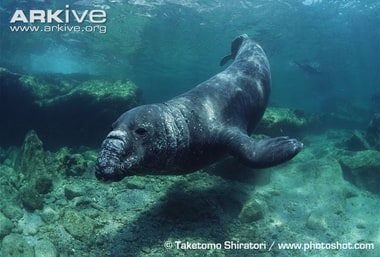A list of my favorite images of elephant seals.
en.wikipedia.org/wiki/Elephant_seal
Elephant seals are large, oceangoing earless seals in the genus Mirounga.
The two species: the northern elephant seal (M. angustirostris) and the southern elephant seal (M. leonina) were both hunted to the brink of extinction by the end of the 19th century but the numbers have since recovered.
The northern elephant seal, somewhat smaller than its southern relative, ranges over the Pacific coast of the U.S., Canada and Mexico.
The most northerly breeding location on the Pacific Coast is at Race Rocks, at the southern tip of Vancouver Island in the Strait of Juan de Fuca.
The southern elephant seal is found in the Southern Hemisphere on islands such as South Georgia and Macquarie Island and on the coasts of New Zealand, South Africa and Argentina in the Peninsula Valdés, which is the fourth-largest elephant seal colony in the world.
In southern Chile, there is a small colony of 120 animals at Jackson Bay, Admiralty Sound (Seno Almirantazgo), Tierra del Fuego.
Elephant seals breed annually and are seemingly faithful to colonies that have established breeding areas.
Elephant seals take their name from the large proboscis of the adult male (bull), which resembles an elephant's trunk.
The bull's proboscis is used in producing extraordinarily loud roaring noises, especially during the mating season. More importantly, however, the nose acts as a sort of rebreather, filled with cavities designed to reabsorb moisture from their exhalations. This is important during the mating season when the seals do not leave the beach to feed and must conserve body moisture as there is no incoming source of water.
They are colossally large in comparison with other pinnipeds, with southern elephant seal bulls typically reaching a length of 5 m (16 ft) and a weight of 3,000 kg (6,600 lb), and are much larger than the adult females (cows), with some exceptionally large males reaching up to 6 m (20 ft) in length and weighing 4,000 kg (8,800 lb); cows typically measure about 3 m (10 ft) and 900 kg (2,000 lb).
Northern elephant seal bulls reach a length of 4.3 to 4.8 m (14 to 16 ft) and the heaviest weigh about 2,500 kg (5,500 lb).
Elephant seals spend up to 80% of their lives in the ocean. They can hold their breath for more than 100 minutes – longer than any other noncetacean mammal.
Elephant seals dive to 1,550 m beneath the ocean's surface (the deepest recorded dive of an elephant seal is 2,388 m (7,835 ft) by a southern elephant seal).
The average depth of their dives is about 300 to 600 m (980 to 1,970 ft), typically for around 20 minutes for females and 60 minutes for males, as they search for their favorite foods, which are skates, rays, squid, octopi, eels, small sharks and large fish. Their stomachs also often contain gastroliths.
While excellent swimmers, they are also capable of rapid movement on land.
Elephant seals are shielded from extreme cold by their blubber, more so than by fur.
The average lifespan of a Northern Elephant Seal is 9 years, while the average lifespan of a Southern Elephant Seal is 20–22 years.
Added to
42 votes
My Aquatic Animals Collection
(37 lists)list by kathy
Published 9 years, 4 months ago  1 comment
1 comment
 1 comment
1 comment Login
Login




























